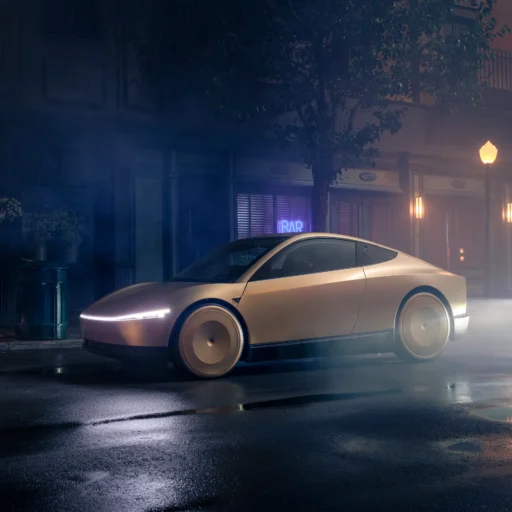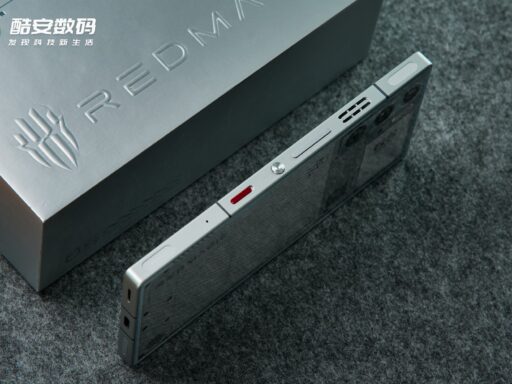As Tesla continues to push the boundaries of autonomous driving technology, its upcoming Robotaxi and Cybercab services are poised to revolutionize the ride-hailing industry. Elon Musk’s bold vision promises a future where fully autonomous Tesla vehicles provide convenient, eco-friendly, and cost-effective transportation options without human drivers. Let’s take a closer look at the potential impact of these groundbreaking innovations and explore how they’ll change the way we move in the near future.
What is Tesla’s Robotaxi?
The Tesla Robotaxi is an autonomous ride-hailing service that will use Tesla’s Full Self-Driving (FSD) technology to transport passengers without the need for a driver. The idea is simple: Tesla owners will be able to add their cars to a Robotaxi network, allowing their vehicles to generate income while they aren’t using them.
Key Features:
- Autonomous Driving: Powered by Tesla’s cutting-edge FSD system, these vehicles will navigate streets using AI and machine learning, without human intervention.
- Cost Efficiency: Elon Musk predicts that the Robotaxi service will significantly lower the cost per mile, making it more affordable than traditional ride-hailing platforms like Uber and Lyft.
- Environmental Benefits: With a fully electric fleet, the Robotaxi service will help reduce emissions, offering a greener alternative to gas-powered taxis and rideshare vehicles.
How it Works:
Tesla owners can enable their vehicles to join the Robotaxi fleet when not in use, allowing the car to drive autonomously and pick up passengers. The goal is to maximize the vehicle’s utilization, turning it into a money-making machine, while providing affordable transportation to users.
What is Tesla’s Cybercab?
While Robotaxi refers to Tesla’s autonomous fleet, Cybercab is envisioned as an extension of Tesla’s futuristic Cybertruck concept. The Cybertruck could serve as a heavy-duty, off-road-ready cab for urban and rural environments alike. Combining the ruggedness of the Cybertruck with Tesla’s self-driving technology, the Cybercab could be ideal for handling tough terrains, delivering larger cargo, or even functioning in emergency and disaster response settings.
Potential Use Cases:
- Urban and Rural Transport: Designed to navigate both city streets and rough, off-road environments, the Cybercab could be Tesla’s versatile answer to all-terrain transportation needs.
- Heavy-Duty Tasks: With its robust design, the Cybertruck can handle heavier loads and passengers, making it useful for scenarios that require more than just a simple city taxi ride.
Why Tesla’s Robotaxi and Cybercab Could Revolutionize Transportation
Tesla’s self-driving services could dramatically reshape urban mobility and ride-sharing industries. Here’s why these innovations could be a game-changer:
1. Lower Costs
Tesla’s Robotaxi aims to provide significantly cheaper rides by eliminating the need for human drivers, one of the biggest expenses for ride-hailing companies today. With Tesla’s fully electric vehicles, fuel costs are also minimized, creating a more affordable option for passengers.
2. Sustainability
Since all Robotaxi and Cybercab vehicles will be electric, they’ll have a much smaller environmental footprint compared to traditional ride-hailing vehicles, many of which rely on gas or hybrid engines. This aligns with Tesla’s broader mission to accelerate the transition to sustainable energy.
3. Maximizing Vehicle Use
By enabling Tesla owners to rent out their cars to the Robotaxi network when they aren’t using them, Tesla increases the utility of each vehicle, making personal car ownership more profitable. This could lead to a future where fewer people need to own cars and rely on an autonomous fleet for transportation instead.
4. Innovation in Smart Cities
Tesla’s autonomous services could integrate seamlessly with smart city initiatives, where AI and data-driven infrastructure can help optimize routes, reduce traffic congestion, and improve overall urban mobility. This would enhance the efficiency and responsiveness of transportation networks in real-time.
Challenges Ahead: Regulatory and Safety Concerns
While Tesla’s Robotaxi and Cybercab services hold immense promise, several challenges remain before they can become mainstream. Regulatory approval for autonomous vehicles is still in progress in many countries, and safety concerns will need to be addressed to ensure that self-driving cars can operate without accidents. Additionally, Tesla’s FSD technology is still being refined, with some experts questioning whether full autonomy can be achieved in the near future.
Final Thoughts: The Road Ahead for Tesla’s Robotaxi and Cybercab
Tesla’s Robotaxi and Cybercab services represent a visionary leap into the future of autonomous transportation. With the potential to reduce costs, lower emissions, and maximize vehicle use, these services could revolutionize not just ride-hailing but the entire automotive industry. While challenges remain, particularly in regulatory and safety domains, the next few years will be pivotal as Tesla works to bring these innovations to market.





